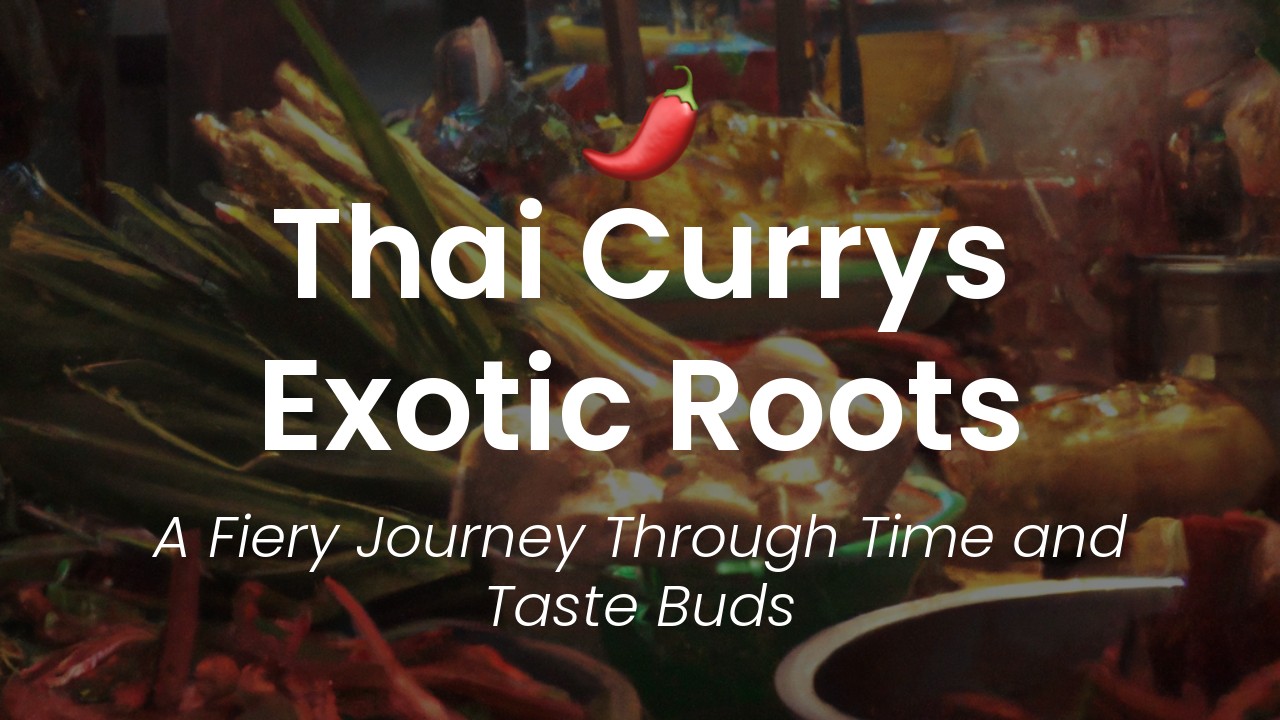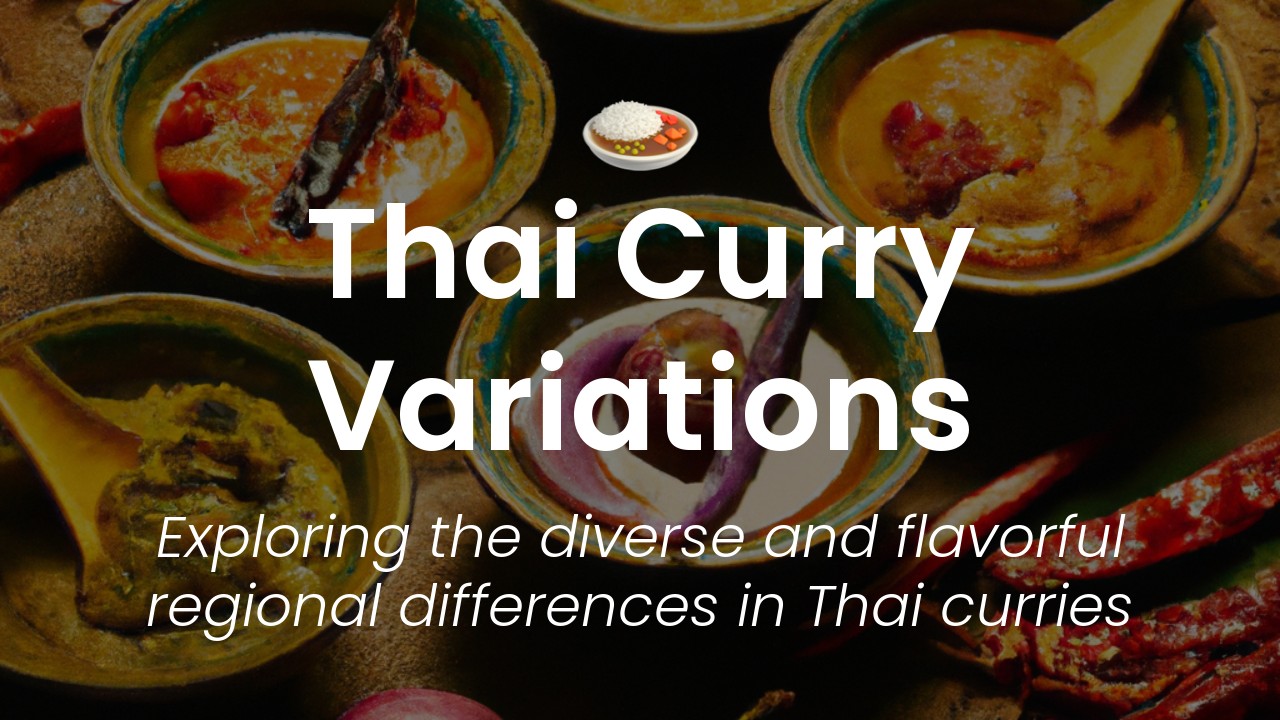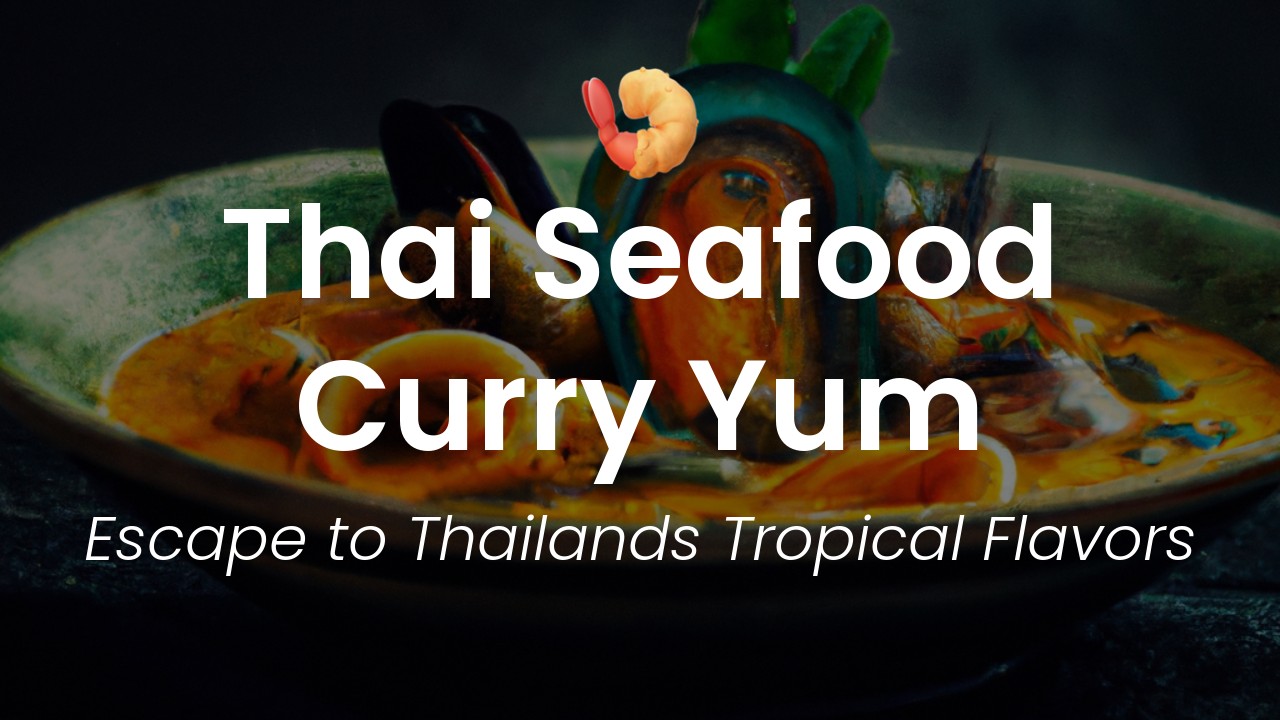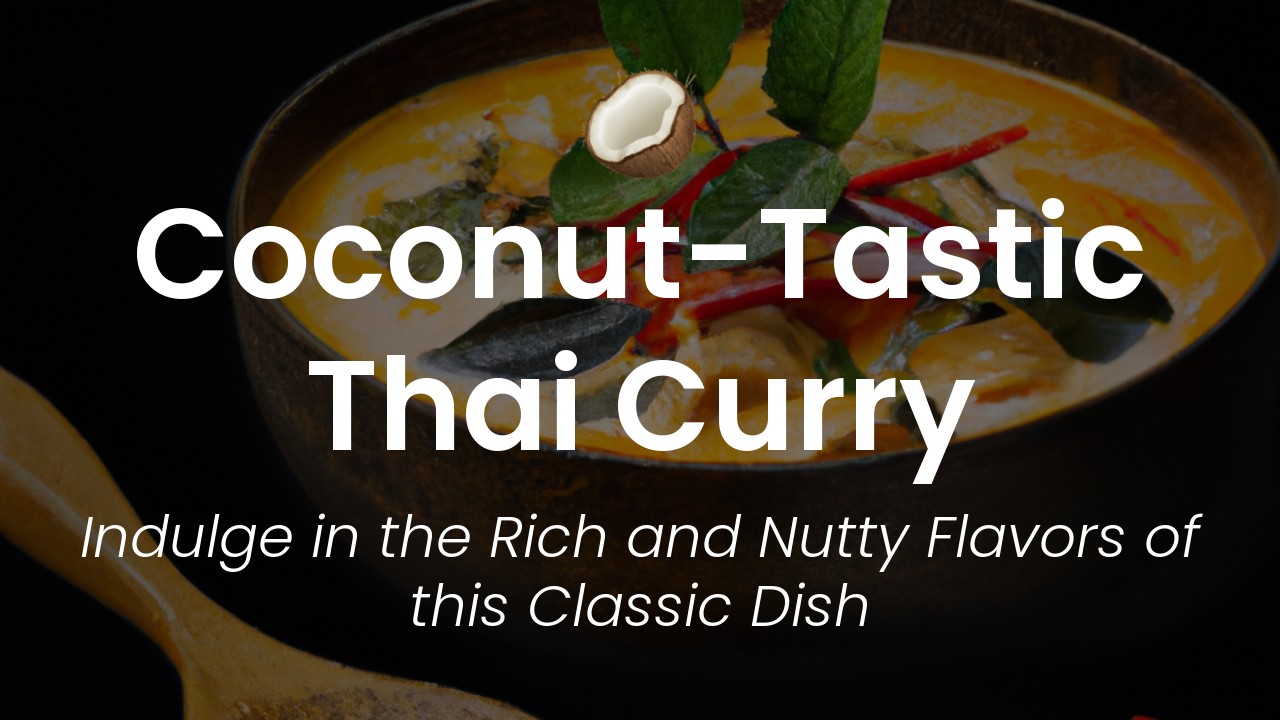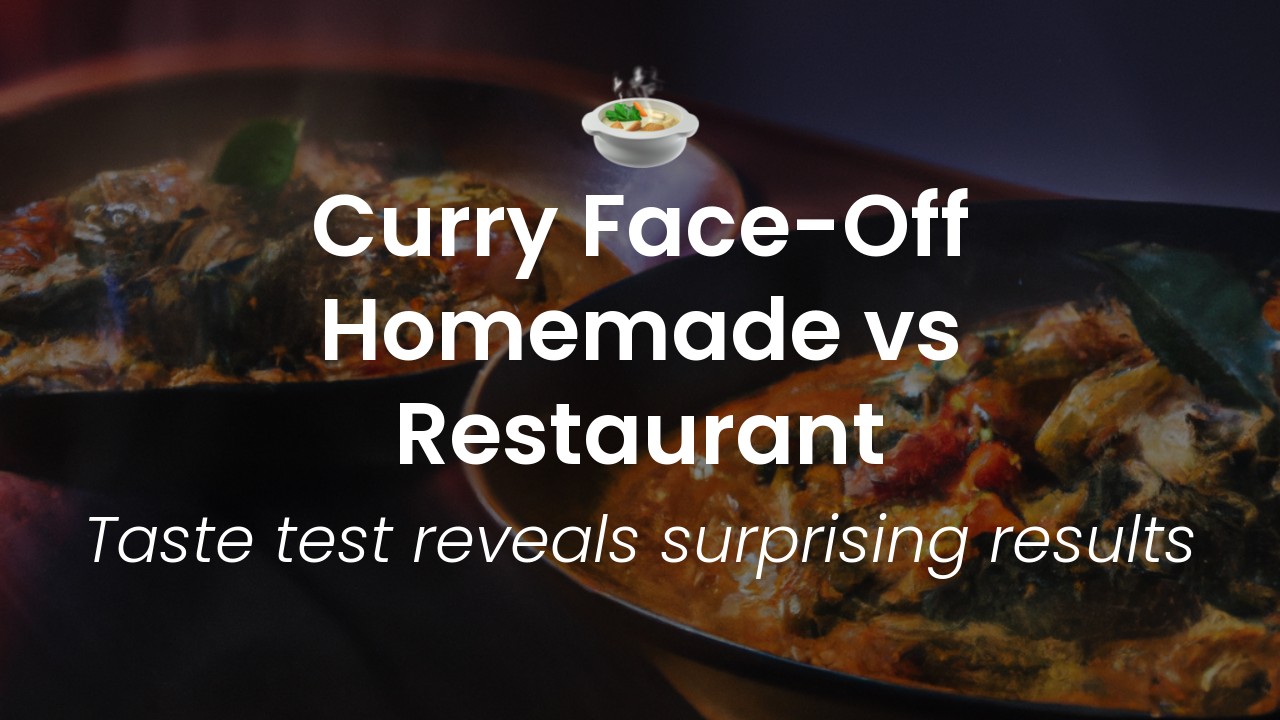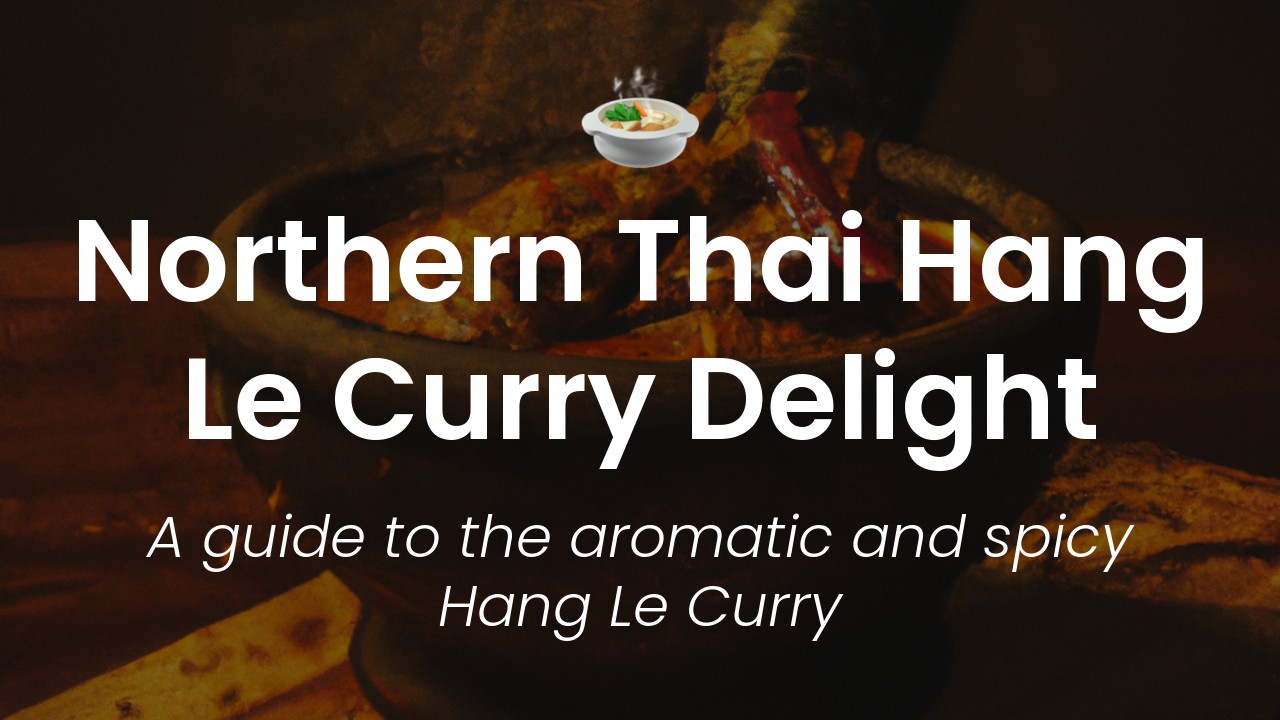As a food-lover and a proud Thai, I’ve always been fascinated by the complexity and richness of Thai cuisine. Despite being famous for its intense and fiery flavors, Thai food is much more than just a splash of chili peppers and fish sauce. It's an art that has been passed down from generation to generation for centuries, a reflection of our country's history, culture, and beliefs. And if there's one dish that epitomizes all the best qualities of Thai cooking, it's undoubtedly Thai curry.
Thai curry is one of those dishes that people either love or hate. For some, the combination of coconut milk, fragrant spices, and herbs, and tender chunks of meat or vegetables is simply irresistible. For others, the level of spiciness is just too intense to handle. But regardless of where you stand on the spectrum of spice tolerance, there's no denying that Thai curry is an important part of our culinary heritage.
In this article, we're going to take a spicy trip through Thailand's culinary history to uncover the exotic origins of Thai curry. We'll explore the influences that have shaped this beloved dish, from the Indian and Chinese traders who introduced new spices and ingredients to our region to the Thai royal court chefs who refined the recipe and turned it into a national treasure. So fasten your seatbelts, and get ready to embark on a delicious journey that will leave your taste buds tingling and your mind boggled by the rich history of Thai cuisine.
The Origins of Thai Curry
Thai cuisine is known for its diverse and complex flavors that burst in your mouth, with each bite a unique blend of sweet, sour, salty, and spicy. At the heart of this cuisine is the beloved Thai curry, a dish that has been enjoyed for centuries and has become a symbol of Thai culture and cuisine. Thai curry is a spicy soup or stew made with a blend of spices, herbs, and chili peppers, combined with coconut cream or milk. But where did this delicious dish come from, and what is its history?
To uncover the origins of Thai curry, we need to look back at Thailand's culinary history. Thai cuisine is influenced by several different cultures and regions, including China, India, Malaysia, and Cambodia. The first evidence of curry in Thailand dates back to the early 13th century, during the Sukhothai era, where traders and immigrants from India brought with them their own version of curry, which was made with spices and herbs like cumin, coriander, and turmeric.
However, Thai curry has come a long way since then and has evolved over the years into a unique blend of flavors and techniques that make it so distinct and beloved. Over time, as Thai cuisine developed and flourished, so did the use of local ingredients and spices that gave Thai curries their unique flavor profile. These local ingredients include lemongrass, galangal, kaffir lime leaves, and chili peppers, which are now essential components of Thai curry.
Palate-Pleasing Spices
The secret to a good Thai curry is in the blend of spices and herbs used. The primary spices used in Thai curry include cumin, coriander, cardamom, cinnamon, cloves, and nutmeg. These spices are typically roasted and ground to release their fragrant oils and flavors before being added to the curry.
In addition to these spices, Thai curry also makes use of several aromatic herbs such as lemongrass, galangal, and kaffir lime leaves. Lemongrass is a tall grass, commonly used in Southeast Asian cuisine for its citrusy and floral flavor. Galangal, on the other hand, is a root used extensively in Thai cooking, which has a subtle peppery and ginger-like taste. Kaffir lime leaves, which are used for their fragrant and citrusy flavor, are another essential ingredient for Thai curry. These ingredients, along with the spices, give Thai curry its unique and complex flavor profile.
The Influence of Buddhism
Buddhism has had a significant impact on Thai cuisine, including the development of Thai curry. For Buddhists, eating meat is discouraged, and vegetarian dishes are widely consumed. Many traditional Thai curries use meat, but there are also many vegetarian versions, which is why Thai curry is such a versatile dish.
In addition to this, Buddhism has also influenced the use of herbs and spices in Thai cuisine. Many of these herbs and spices are used for their medicinal properties, as Buddhism places a strong emphasis on natural remedies and healing. This is why many spices and herbs used in Thai curry have anti-inflammatory and anti-bacterial properties.
Ancient Trade Routes & Foreign Influences
Thailand's location at the heart of Southeast Asia has made it a hub for trade and commerce for centuries. As a result, Thai cuisine has been shaped by the various cultures and cuisines that passed through the country, such as Indian, Chinese, and Malaysian cuisine. For example, Indian traders brought with them their version of curry, which was adapted and transformed over time, resulting in the development of Thai curry.
Malaysian and Indonesian cuisine, on the other hand, has influenced the use of coconut milk in Thai curry. This ingredient, which is widely used in regional Malay cooking, was later incorporated into Thai curries, resulting in a sweeter, creamier flavor profile.
Royal Recipes & Fusion Cuisine
Finally, Thai curry has also been influenced by the royal kitchens of Thailand. The royal family of Thailand has been known to be passionate about food and cooking, and has developed several recipes and cooking techniques that have been passed down through generations.
One such influence is the use of fusion cuisine in Thai curry. During the reign of King Rama IV in the 19th century, Thai cuisine underwent a significant transformation, incorporating elements of Western cuisine. The result was the creation of fusion dishes like Massaman curry, which are made with a blend of spices and herbs, including Indian and Persian flavors.
In conclusion, Thai curry is a complex and flavorful dish that has evolved over centuries, influenced by trade routes, foreign cuisines, Buddhism, and the royal kitchens of Thailand. Whether it's the traditional Green curry, the hearty Massaman curry, or the spicy Panang curry, there's a Thai curry for every palate, and each tells a story of Thai culinary history and culture.

